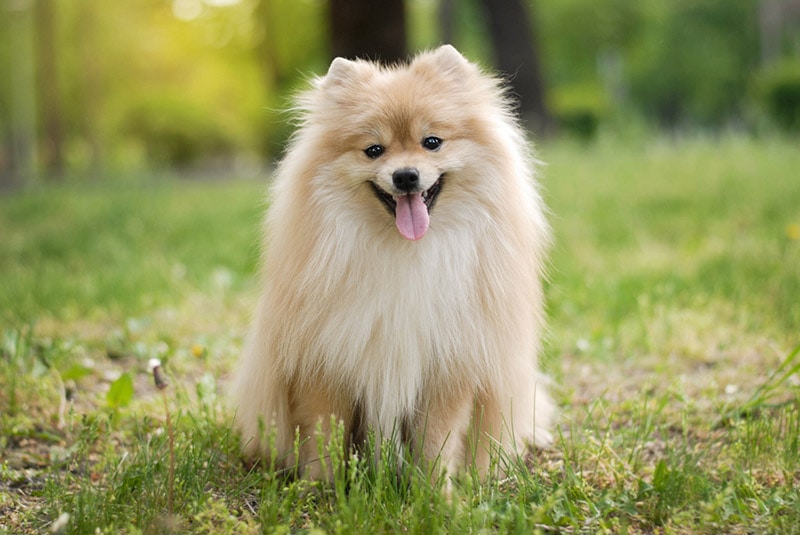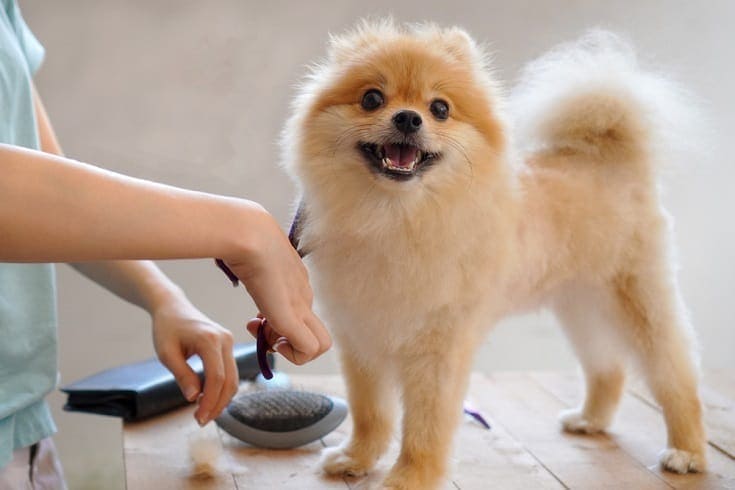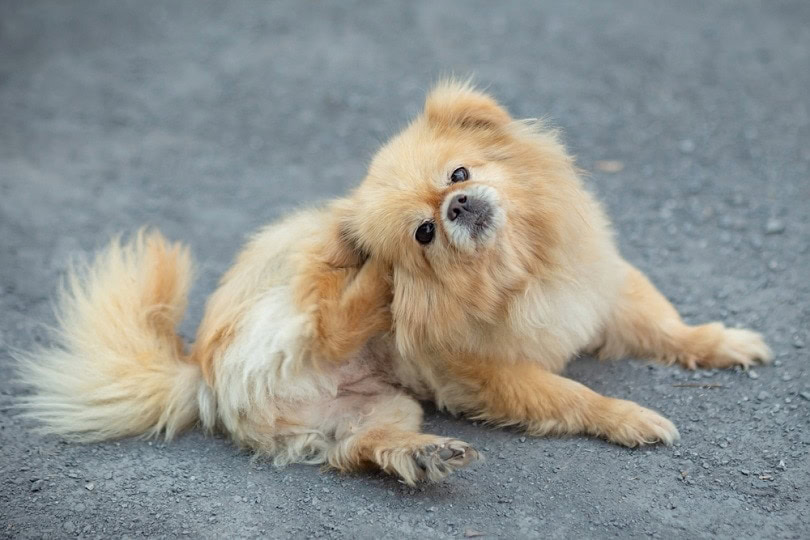Cream Pomeranian: Facts, Origin & History (with Pictures)
Updated on

Cream Pomeranians aren’t a separate breed of Pomeranian but instead one of the breed’s many available colorations. They share the same attributes as Poms of other colors but have a stunning creamy, pale orange tint to their fur.
Whether you’re considering adopting a beautiful Cream Pomeranian or are just interested in learning more about the breed, you’ll want to keep ready. So come along with us as we learn more about the origins and history of the beautiful Cream Pomeranian.
The Earliest Records of Cream Pomeranians in History
Pomeranians are named for the Pomerania region in north-west Poland and north-east Germany, but this isn’t their place of origin. Instead, Pomerania is where this breed was bred to its modern standards. The country of origin isn’t exactly known as Poms evolved throughout several places in Europe, such as Italy, Germany, Sweden, and the Netherlands.
Poms are descendants of the German Spitz, a large working dog from the Arctic. It’s hard to imagine this toy breed having a link to large, burly, and strong working dogs of the Arctic, but it’s true. Early Pomeranians were much larger than the ones we know and love today, and because of their thick double coat, they were often put to work in harsh Arctic conditions. They worked as sled and load-carrying dogs and would also herd sheep.
How Cream Pomeranians Gained Popularity
Pomeranians saw a huge uptick in popularity during the 18th and 19th centuries due mostly to their royal owners. Though the breed existed well before these eras, it wasn’t until the 1760s, when England’s Queen Charlotte imported two white Pomeranians, that the breed began to take off. When Charlotte’s granddaughter, Queen Victoria, brought home four Poms in 1888, the breed’s popularity became undeniable.
The British royal family heavily influenced the evolution of the breed. Queen Victoria’s Poms were particularly small, which caused the smaller variety to become more universally popular and coveted. During her lifetime, the size of the average Pom decreased by half.

Formal Recognition of Cream Pomeranians
Pomeranians were entered in American shows in the Miscellaneous class back in the 1890s. Regular classification for the breed didn’t occur until 1900 when the American Kennel Club (AKC) officially acknowledged the Pomeranian as a breed. Soon after, the American Pomeranian Club (APC) was established. The club had its first specialty show just two years later with over 260 Pomeranian entries.
According to the AKC, all Pomeranians’ colors, patterns, and variations are allowed to be shown.
The Kennel Club has different rules, however. All whole colors are allowed, but they should be free of black or white shading. Cream dogs should have black noses and eye rims. Whites need to be free of lemon or other similar colors.
Top 4 Unique Facts About Cream Pomeranians
1. There are three types of Cream Pomeranians
The first type is clear cream. This color comes from the (e) gene, which turns black pigment into yellow. A clear Cream Pomeranian often has other genetic factors that make its coloration so pale it is sometimes entirely white. These puppies are usually born looking white. They cannot make black pigment on any of their body hair, so their whiskers are often clear or straw-colored.
Non-clear cream is the second color type. These puppies are born with a silvery coloration. Unlike clear creams, they can make black pigmentation on their body hair. While they’re born silvery, most puppies will change to a creamier color as they grow into adulthood.
Thirdly is the Cream Sable Pomeranian. These pups have a creamy-colored undercoat and a darker silvery sable patterned outer coat.

2. Some Cream Pomeranians may develop “black skin disease”
Black skin disease refers to a coat condition resulting in symmetrical fur loss and darkening pigmentation of the balding areas. This condition is sometimes known as Pomeranian alopecia, pseudo-Cushing’s syndrome, and coat funk.
This condition doesn’t cause any pain, itchiness, or discomfort and seems to be more prevalent in male Pomeranians than in females.
3. Cream Pomeranians aren’t really cream-colored at all
The term “cream” is a bit misleading, as the clear cream Poms aren’t really the off-white color you’d expect when hearing the word cream. Instead, the coloration is best described as a very pale orange.

4. Pomeranians made up 66% of the surviving dogs on the Titanic.
There were almost certainly just three dogs that survived the sinking of the Titanic in 1912. Two survivors were Pomeranians, while the third was a Pekingese. All of the surviving dogs were put onto lifeboats with their quick-thinking owners. They were brought onto the deck at the first sign of trouble, and because they were all small breeds, they fit comfortably on their parent’s laps without taking up space on the raft.
 Does the Cream Pomeranian Make a Good Pet?
Does the Cream Pomeranian Make a Good Pet?
Pomeranians in any coloration make fantastic pets. They’re easy to train, smart, curious, feisty, and surprisingly bold for their small size. They can make great family dogs and can live harmoniously with children and other pets, provided they’re properly socialized and introduced.
These sweet and affectionate dogs love being near their owners and being part of the social activities happening around the house. That said, they aren’t overly dependent, so they’re often a great fit in households with busy owners.
A stereotype against Pomeranians and other toy breeds is that they’re loud and snappy, but this isn’t true. Every dog, regardless of breed, has its own unique set of personality traits. With patience and socialization, Poms can be very calm and friendly. Any nipping or excessive barking can usually be traced back to improper handling and poor training.
Final Thoughts
Cream Pomeranians make beautiful family pets and will always keep their owners on their toes. However, if you’re considering adopting a Cream Pom, make sure you ask the breeder which cream colors they expect the pup to have when it grows up. Remember, they can have either a pale orange, silver, or sable coloration to them, and it is difficult to know when they’re born what the final color will be.
See Also:
- Black Pomeranian: Info, Pictures, Traits & Facts
- White Pomeranian: Facts, Origin & History (With Pictures)
Featured Image Credit: Oksamutnaya, Shutterstock












